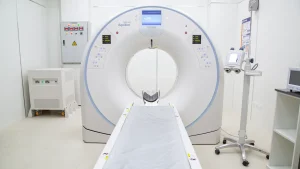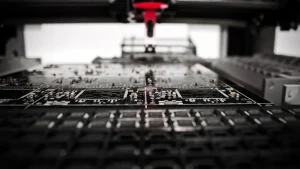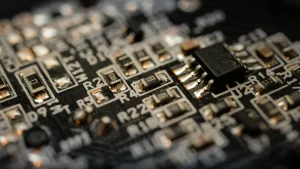キャリアウェーハは、必要不可欠な機械的支持と安定性を提供することにより、エッチングプロセスにおいて重要な役割を果たします。デリケートな材料が複雑なエッチング工程の間、無傷であることを保証するために、これらのウェハーに依存しています。ウェーハエッチングキャリアはバックボーンとして機能し、メインウェーハの完全性を損なうことなく、正確な結果を達成することができます。キャリアウェーハを効果的に使用するには、その機能とエッチング環境との相互作用を理解する必要があります。この知識により、エッチングプロセスを最適化し、優れた結果を得ることができます。
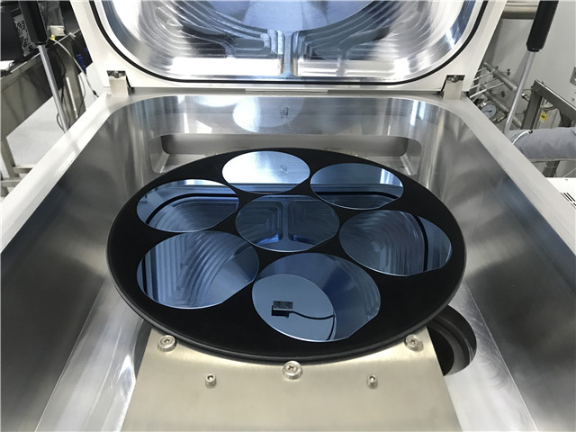
要点
- キャリアウェーハは、エッチングプロセス中の安定性と精度を確保するために、必要不可欠な機械的サポートを提供します。
- サファイア、石英、シリコン、ガラスなど、適切なタイプのキャリア・ウェーハを選択するかどうかは、お客様の特定のエッチング要件によって決まります。
- エッチング品質に影響する汚染を防ぐため、キャリアとメインウェーハの両方を常にクリーニングしてください。
- 均一なエッチング結果を得るためには、メインウェーハとキャリアウェーハの適切なアライメントが不可欠です。
- エッチング装置の定期的な点検とメンテナンスは、エラーを防止し、プロセス全体の有効性を高めることができます。
- エッチング手順を文書化することで、成功した戦略や改善すべき点を特定し、将来のプロジェクトでより良い結果を導くことができます。
ウェハ・エッチング・キャリアを理解する
定義と目的
について ウェハーエッチングキャリア は、エッチングプロセスにおいて重要な役割を果たします。このキャリアは、メインウェーハに機械的な支持を与え、エッチング工程中の安定性を確保するために使用されます。このキャリアは保護層として機能し、デリケートな材料を潜在的な損傷から保護します。ウェーハエッチングキャリアを使用することにより、正確なエッチング結果を達成しながら、メインウェーハの完全性を維持することができます。キャリアの主な目的は、薄くて壊れやすいウェハの取り扱いと処理を容易にし、高品質の結果を達成することに集中できるようにすることです。
キャリア・ウェーハの種類
適切なタイプのウェーハエッチングキャリアを選択する際には、いくつかの選択肢があります。各タイプはユニークな利点を提供し、特定のアプリケーションに適しています:
-
サファイア・キャリア・ウェーハ:優れた熱安定性と化学的安定性で人気があります。耐久性が重要な高温プロセスでよく使用されます。
-
石英キャリアウエハー:透明性と低熱膨張で知られるこのウェーハは、光学用途に理想的です。精密な光学特性を必要とするプロセスで使用されます。
-
シリコンキャリアウェーハ:これらは汎用性が高く、様々なエッチングプロセスで広く使用されている。多くの半導体アプリケーションと互換性があり、信頼できます。
-
ガラス・キャリア・ウェーハ:耐薬品性に優れ、刺激性の強い化学薬品が使用されるプロセスに適しています。化学的安定性が優先される環境では有用です。
適切な選択 ウェハーエッチングキャリア は、お客様の特定のニーズとエッチングプロセスの要件によって異なります。各タイプの特徴を理解することで、作業の効率と効果を高めるための十分な情報に基づいた決定を下すことができます。
キャリア・ウェーハを使用する利点
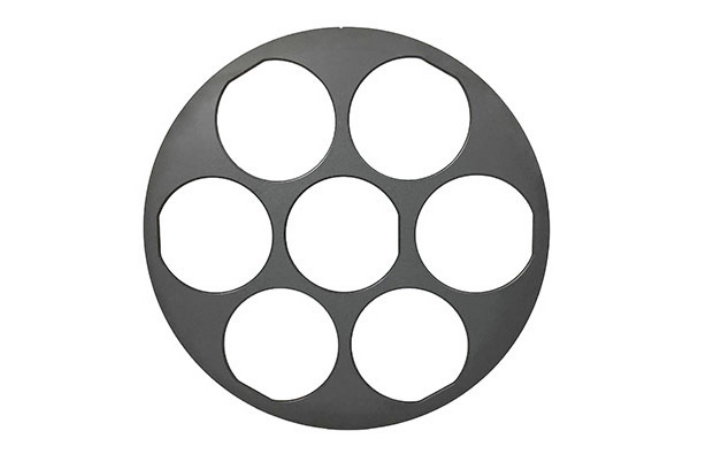
安定性の向上
キャリアウェーハは、エッチングプロセスの安定性を大幅に向上させます。強固な基盤を提供することで、作業の精度を損なう可能性のある不要な動きを防止します。デリケートな材料のアライメントをエッチング工程全体で維持するために、キャリアウェーハを頼りにすることができます。この安定性により、各エッチングが一貫して正確であることが保証され、高品質の結果が得られます。ウェハエッチングキャリアを使用すると、処理中の振動やシフトによるエラーのリスクを最小限に抑えることができます。
デリケートなウェハーの保護
デリケートなウェーハは、損傷を避けるためにエッチング中の保護が必要です。キャリアウェーハはシールドの役割を果たし、これらの壊れやすい部品を潜在的な危害から保護します。機械的ストレスを吸収し、破損を防止するキャリアウェーハは信頼できます。この保護機能は、割れやすい薄い材料や脆い材料を扱う場合に非常に重要です。キャリアウェーハを使用することで、デリケートなウェーハを無傷な状態に保ち、その完全性と機能性を維持することができます。
プロセス精度の向上
エッチングプロセスにおいて精度は極めて重要であり、キャリアウェーハはそれを達成する上で重要な役割を果たします。キャリアウェーハは、エッチング環境をより効果的に制御し、正確な結果をもたらします。安定した基盤があれば、プロセスに影響を与える外部要因を心配することなく、エッチングパラメーターの微調整に集中することができます。ウェーハエッチングキャリアを使用することで、複雑なパターンやデザインを高精度で実現することができます。この精度は、正確な仕様と詳細な特徴を要求されるアプリケーションに不可欠です。
ステップ・バイ・ステップ・ガイド
準備
エッチング・プロセスを開始する前に、メイン・ウェハーとエッチング・ウェハーの両方を準備する必要があります。 ウェハーエッチングキャリア.まず、両方のウェーハの表面をクリーニングし、エッチング・プロセスの妨げとなる汚れを取り除きます。適切な洗浄液を使用し、表面が完全に乾いていることを確認してから行ってください。次に、キャリアウェーハに欠陥や凹凸がないか検査します。滑らかで欠陥のない表面は、正確なエッチング結果を得るために非常に重要です。キャリアウェハーの状態を確認したら、次のステップに進んでください。
アライメント
エッチングを成功させるには、メインウェーハとキャリアウェーハの適切なアライメントが不可欠です。まず、メインウェーハをキャリアウェーハの上に置き、ウェーハのセンターとアライメントが正しいことを確認します。この際、アライメントマークやガイドがあれば使用してください。メインウェーハとキャリアウェーハの位置が完全に一致するまで、慎重に位置を調整します。このアライメントにより、エッチングプロセスがメインウェーハの表面全体に均一に進行します。希望のアライメントが得られたら、エッチングプロセス中にウェハが動かないように固定します。
取り扱いとメンテナンス
ウェーハエッチングキャリアの取り扱いとメンテナンスには、細部まで注意する必要があります。汚染物質を持ち込まないよう、常に清潔な手袋を着用してウェハーを取り扱ってください。ウェハーを移動する際は、損傷を防ぐために適切な工具や機器を使用してください。エッチングプロセス終了後は、キャリアウェーハを完全に洗浄し、残留物やパーティクルを除去してください。キャリアウェーハの定期的なメンテナンスは、その寿命を延ばし、今後のエッチングプロセスで安定した性能を保証します。キャリアウェーハは、ほこりやその他の汚染物質から保護するため、清潔で管理された環境で保管してください。
課題と解決策
共通の課題
キャリアウェーハをエッチングプロセスで使用する場合、いくつかの課題に遭遇する可能性があります。これらの問題を理解することは、効果的な準備と対処に役立ちます:
-
素材適合性:すべてのキャリアウェーハがすべてのエッチングプロセスに適合するわけではありません。キャリアウェハーの材質がエッチング薬品やガスと不利に反応する場合、問題に直面する可能性があります。
-
アライメントの難しさ:メインウェーハとキャリアウェーハの正確なアライメントを達成することは困難です。アライメントを誤ると、エッチングが不均一になり、結果が損なわれる可能性があります。
-
熱膨張のミスマッチ:熱にさらされたときの膨張率は、材料によって異なります。この不一致は、高温プロセス中にストレスや潜在的な損傷を引き起こす可能性があります。
-
汚染リスク:キャリアウェーハ表面の汚染物質は、エッチング品質に影響を与えます。キャリアウェーハとメインウェーハの両方にパーティクルや残留物がないことを確認する必要があります。
-
ボンディング問題:メインウエハーとキャリアウエハーの貼り合わせに使用される仮接着技術は、時として失敗し、加工中に剥離につながることがある。
実践的ソリューション
これらの課題に対処するには、戦略的アプローチと慎重な計画が必要です。ここでは、実践可能な解決策をいくつか紹介する:
-
適合素材の選択:特定のエッチングプロセスに対して化学的に不活性で熱的に安定な材料から作られたキャリアウェーハを選択してください。必要に応じて互換性テストを実施してください。
-
精密アライメントツールの使用:高品質のアライメントツールと装置に投資してください。これらのツールは、ウェハーの正確な位置決めを実現し、ミスアライメントのリスクを低減します。
-
熱特性を考慮する:キャリアウェーハは、メインウェーハと熱膨張係数の近いものを選んでください。この配慮により、温度変化時のストレスを最小限に抑えることができます。
-
厳密な洗浄手順の実施:キャリアとメインウェーハの両方に厳格な洗浄手順を確立すること。汚染を防ぐためにクリーンルーム環境を使用すること。
-
確実なボンディング:メインウェーハをキャリアウェーハに固定するには、実績のある接合技術と材料を使用してください。エッチング工程を開始する前に、ボンディングの完全性を定期的に検査してください。
これらの一般的な課題を理解し、対処することで、エッチングプロセスの有効性を高めることができます。これらのソリューションを導入することで、一貫した高品質の結果を得ることができます。
ベストプラクティス
最適化のためのヒント
エッチング・プロセスにおけるキャリア・ウェーハの使用を最適化するために、以下のヒントを検討してください:
-
適切なキャリアウエハーの選択:キャリアウェハは、エッチングプロセスの特定の要件に適合するものを選択してください。熱安定性、耐薬品性、材料適合性などの要素を考慮してください。この選択により、メインウェーハの完全性を損なうことなく、最高の結果を得ることができます。
-
清潔さの維持:キャリアとメインウェーハの両方に汚染物質がないようにしてください。クリーンルーム環境と適切な洗浄プロトコルを使用して、パーティクルや残留物がエッチング品質に影響するのを防ぎます。クリーンな表面は、より正確で一貫した結果をもたらします。
-
機器の定期点検:エッチング装置やツールに摩耗や損傷がないか、定期的にチェックしてください。これらのツールを適切にメンテナンスすることで、正しく機能するようになり、エッチングプロセス中のエラーのリスクを減らすことができます。
-
プロセスパラメータの監視:温度、圧力、ガス流量などのエッチング・パラメータを注視してください。必要に応じてこれらのパラメータを調整し、特定のエッチングプロセスに最適な条件を維持してください。
-
文書手順:エッチングの手順と結果を記録してください。この記録は、成功した戦略や改善点を特定するのに役立ちます。また、将来のエッチングプロジェクトの貴重な参考資料としても役立ちます。
よくある間違いを避ける
よくある間違いを避けることで、エッチング工程の効果を大幅に高めることができます:
-
アライメントの軽視:メインウェーハとキャリアウェーハのアライメントを正確にしてください。アライメントを誤ると、エッチングが不均一になり、結果が悪くなることがあります。アライメントツールを使用して、正確な位置合わせを行ってください。
-
素材の互換性を見落とす:キャリア・ウェーハに使用される材料が、エッチング薬品およびガスに適合することを確認してください。相容性のない材料は、不利に反応し、エッチングプロセスに影響を与える可能性があります。
-
熱膨張を無視する:キャリアウェーハとメインウェーハの両方の熱膨張特性を考慮してください。膨張率の不一致は、高温プロセス中に応力と潜在的な損傷を引き起こす可能性があります。
-
洗浄ステップの省略:エッチング工程前後の洗浄工程を省略しないでください。汚染物質はエッチングの品質を低下させ、欠陥や不整合の原因となります。
-
不十分なボンディング:メイン・ウェーハとキャリア・ウェーハの接合は確実に行ってください。接着が弱いと処理中に剥離し、エラーや破損の原因となります。
これらのベストプラクティスに従うことで、エッチングプロセスの効率と精度を高めることができます。これらの戦略を実施することで、リスクとエラーを最小限に抑えながら、優れた結果を達成することができます。
このブログでは、エッチングプロセスにおけるキャリアウェーハの重要な役割について説明しました。ウェーハエッチングキャリアが、どのように機械的なサポートと安定性を提供し、正確で高品質な結果を保証するかを学びました。その種類、利点、ベストプラクティスを理解することにより、エッチングプロセスを効果的に最適化することができます。キャリアウェーハを正しく使用することは、デリケートな材料を保護するだけでなく、作業の精度を高めることにもつながります。これらの見識を導入して、エッチング・プロジェクトで優れた成果を達成してください。
よくあるご質問
キャリア・ウェーハはエッチング・プロセスで何に使われるのですか?
キャリアウェーハは、エッチング中に機械的なサポートと安定性を提供します。デリケートな素材を保護し、メインウェーハの安定したベースとして機能することで、正確な結果を保証します。
キャリアウエハーの正しい種類の選び方は?
エッチングプロセス特有の要件を考慮する。熱安定性、耐薬品性、材料適合性などの要素を評価する。最適な結果を得るために、これらのニーズに合ったキャリアウェハを選択してください。
キャリアウェーハはエッチング品質に影響しますか?
はい、可能です。キャリアウェーハの選択は、エッチングレート、選択性、モルフォロジーに影響します。適切なキャリアウェーハを選択することで、エッチングプロセスの精度と品質が向上します。
メインウェーハとキャリアウェーハのアライメントを確実にする方法を教えてください。
アライメントツールまたはガイドを使用して、メインウェーハをキャ リアウェーハ上に正確に配置してください。エッチング中にウェーハが動くのを防ぐため、ウェーハを固定する前に、ウェーハが中央に位置し、アライメントされていることを確認してください。
キャリア・ウェーハを使用する際の一般的な課題は何ですか?
材料の互換性の問題、アライメントの難しさ、熱膨張の不一致、汚染のリスク、ボンディングの問題といった課題に直面するかもしれません。戦略的な計画と慎重な実行によって、これらの課題に対処してください。
エッチング工程中の汚染を防ぐにはどうすればよいですか?
クリーンルーム環境を使用し、厳格な洗浄プロトコルに従うことで、清浄度を維持する。エッチングプロセスを開始する前に、キャリアとメインウェーハの両方に汚染物質がないことを確認してください。
メインウェーハとキャリアウェーハのボンディングに失敗した場合、どうすればよいですか?
エッチング工程を開始する前に、接合の完全性を検査してください。信頼できる接合技術と材料を使用してください。ボンディングに失敗した場合は、使用したボンディング方法と材料を再評価してください。
キャリアウエハーの使用を最適化するためのベストプラクティスはありますか?
適切なキャリアウェハーの選択、清浄度の維持、装置の定期的な検査、プロセスパラメータの監視、手順の文書化などです。これらの実践は、エッチングプロセスの効率と精度を高めます。
デリケートなウエハーを保護するキャリアウエハーの仕組みとは?
キャリアウェーハはシールドの役割を果たし、機械的ストレスを吸収して破損を防ぎます。壊れやすいコンポーネントを保護し、エッチング中のデリケートなウェハーの完全性と機能性を保証します。
なぜ熱膨張特性を考慮することが重要なのですか?
熱にさらされたときの膨張率は、材料によって異なります。熱膨張特性を考慮することで、高温プロセス中のストレスや潜在的な損傷を最小限に抑え、エッチングプロセスの安定性を確保します。


